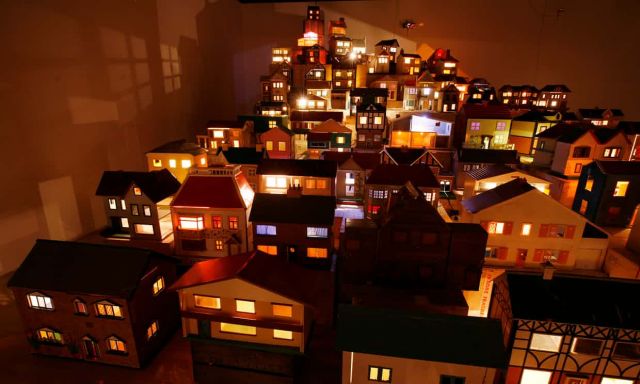#feministfriday episode 166 | Shy and quiet
Good morning,
How are you doing? If you are in London and don’t have plans for the weekend, allow me to recommend the Rachel Whiteread show at the Tate Britain! She is my favourite visual artist – I remember seeing one of her works (which I now know is Village) at the Tate Modern and it was the first time I’d been truly and unexpectedly taken aback by a work of art. I didn’t know what to do with myself and came quite close to crying.
 Before this newsletter totally eludes my control, Village is now a permanent exhibit at the Museum Of Childhood:
Before this newsletter totally eludes my control, Village is now a permanent exhibit at the Museum Of Childhood:
“Over the years,” she says, “through my interest in sculpture and architecture I started to buy the odd doll’s house, then thought about lighting them, and it became a bit obsessive – I started to see doll’s houses everywhere. These amazing parcels arrived from eBay, the extraordinary way people packaged them. And when I unwrapped them, it became a village.” She donated the work to the museum, where it will live in a dark corner, a hillside of crates, the houses lit from within.
https://www.theguardian.com/artanddesign/2017/mar/26/rachel-whiteread-dolls-houses-exhibition
And back to the original topic, here’s an interview with Whiteread about the Tate Britain show. Note on the Tate Britain – it’s a lot less crowded than the Tate Modern! If you found your last visit to a Tate museum really stressful, consider that you might have been in the wrong Tate. I love this idea of "shy sculptures" – pieces that look like they "should" be there until you look closer and see that they are inside-out:
The importance she attaches to finding the right location for her sculptures is evident in a strain of her work she calls “shy sculptures”. These are castings of sheds or cabins — “miniature homes” — placed in remote, difficult-to-access locations such as a Norwegian fiord, a hill on Governors Island, New York, and the Mojave Desert. Standing temporarily outside Tate Britain is her latest example, a casting of the inside of a chicken shed in Norfolk, showing the details of hand-sawn timber used in the shed’s construction. “Sheds are furniture for people to dream away their lives in. It’s become a part of my language.”
https://www.ft.com/content/550c98be-96ef-11e7-b83c-9588e51488a0
There is something, too, in the quietness of sheds and dreaming that reminded me of this article about Annie Baker’s plays – our lives are not speed and yelling, most of the time, and culture could maybe use a little more staring into space:
Baker’s 2010 play The Aliens epitomizes the quiet style. It’s set in the dingy backyard of a coffee shop, and for the first act, the characters just talk. In the second act, one of the ‘aliens’ has dropped dead, but everything else is pretty much the same. There’s a long meditative interlude, in which a character repeats a single word so many times that it starts to function like a mantra. Forget the Daytona pit—the play is more like getting a flat tire and then running out of gas. It could hardly be slower or quieter (“at least a third—if not half—of this play is silence” is Baker’s instruction on performing it), and it’s a brilliant play—subtle, richly felt, completely believable, and both heartbreaking and funny, without straining for any effects.
https://www.theawl.com/2017/11/quiet-style-annie-baker/
Have a dreamy Friday,
Alex.